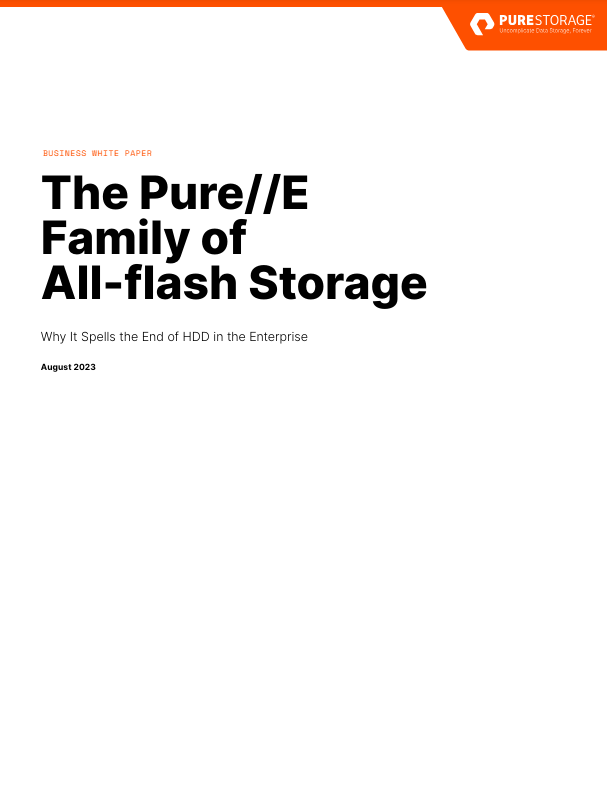
The Pure//E Family of All-flash Storage

In 2012, enterprise storage vendor Pure Storage® shipped the first enterprise-class all-flash array (AFAs), called the FlashArrayTM. By 2016, all the other enterprise storage vendors had introduced their own AFAs, and over the last decade AFAs have come to dominate storage shipments for high-performance and high- availability workloads. Compared to hard disk drive (HDD)-based storage systems, AFAs delivered better and more consistent performance, higher availability, better reliability, enabled the use of critical new technologies like compression and deduplication for latency-sensitive workloads, were far easier to manage than HDD-based systems, and lowered both energy and floorspace consumption. As a result, the market for “high-performance” 10K and 15K RPM HDDs has almost disappeared.
Today, nearline HDDs are still in broad use with more capacity- and cost-conscious workloads, representing roughly 90% of overall worldwide capacity. Because of the lower cost of raw storage capacity with HDDs, many enterprises mistakenly perceive systems based around them as more cost-effective for capacity- and cost-conscious workloads. These workloads include use cases like data protection, artificial intelligence (AI) and machine learning (ML)-driven data analytics, log analytics, content repositories, electronic design automation (EDA), and high performance computing across verticals like financial services, video surveillance, media and entertainment, healthcare, and others. Even the staunchest proponents of HDDs would admit, however, that if flash cost the same as disk, the market for HDDs would disappear almost overnight. With innovations and efficiencies introduced by Pure Storage, the industry is now at that inflection point.